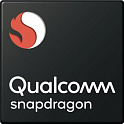 MediaTek Helio G90T
MediaTek Helio G90T
Comparision Huawei Kirin 820 5G vs MediaTek Helio G90T
Grade
Top specs and features
AnTuTu test score
Memory frequency
4G support
Technological process
GPU base clock
Description
Huawei Kirin 820 5G - 8 - core processor, clocked at 2360 GHz. MediaTek Helio G90T is equipped with 8 cores clocked at 2050 MHz. The maximum frequency of the first processor is 2.36 GHz. The second is capable of overclocking to 2.05 GHz.
Huawei Kirin 820 5G consumes 5 Watt and MediaTek Helio G90T 5 Watt.
As for the graphics core. Huawei Kirin 820 5G is equipped with Mali-G57 MP6. The second uses Mali-G76MC4. The first operates at a frequency of 850 MHz. MediaTek Helio G90T operates at 800 MHz.
Regarding processor memory. Huawei Kirin 820 5G may support DDR4. The maximum memory capacity is 12 GB. And its throughput is 32 GB/s. MediaTek Helio G90T works with DDR4. The maximum amount of memory can be 10. At the same time, the throughput reaches There is no data GB/s
Let's move on to performance testing in benchmarks. In the AnTuTu benchmark, Huawei Kirin 820 5G scored 461817 points out of 988414 possible points. In the GeekBench 5 (Multi-Core) benchmark, it scored 2564 points out of a possible 16511 points. MediaTek Helio G90T in Antutu received 341456 points. And GeekBench 5 (Multi-Core) scored 1725 points .
Results.
Why Huawei Kirin 820 5G is better than MediaTek Helio G90T
- AnTuTu test score 461817 против 341456 , more on 35%
- Technological process 7 nm против 12 nm, less by -42%
- GPU base clock 850 MHz против 800 MHz, more on 6%
- Maximum processor frequency 2.36 GHz против 2.05 GHz, more on 15%
- Max. Memory 12 GB против 10 GB, more on 20%
- Bluetooth version 5.1 против 5 , more on 2%
- FLOPS 560 TFLOPS против 176 TFLOPS, more on 218%
- Data acquisition rate 1600 MBits/s против 600 MBits/s, more on 167%
Huawei Kirin 820 5G vs MediaTek Helio G90T: highlights

Interfaces and communications
Memory specification
Performance
Benchmark tests
FAQ
How many points does Huawei Kirin 820 5G and MediaTek Helio G90T score in benchmarks?
In the Antutu benchmark, Huawei Kirin 820 5G scored 461817 points. MediaTek Helio G90T scored 341456 points.
How many cores does the processor have?
Huawei Kirin 820 5G has 8 cores. MediaTek Helio G90T has 8 cores.
Does the processor support NAVIC?
Huawei Kirin 820 5G There is no data.
How many transistors are there in processors?
Huawei Kirin 820 5G has There is no data million transistors. MediaTek Helio G90T has There is no data million transistors.
What GPU is installed on Huawei Kirin 820 5G and MediaTek Helio G90T?
Huawei Kirin 820 5G uses Mali-G57 MP6. Processor MediaTek Helio G90T has graphics core Mali-G76MC4 installed.
How fast are the processors?
Huawei Kirin 820 5G is clocked at 2360 MHz. MediaTek Helio G90T operates at 2050 MHz.
What kind of RAM is supported?
Huawei Kirin 820 5G supports DDR4. MediaTek Helio G90T supports DDR4.
What is the maximum frequency of processors?
Huawei Kirin 820 5G has a maximum frequency of 2.36 Hz. The maximum frequency for MediaTek Helio G90T reaches 2.05 GHz.
How much energy do they consume?
The power consumption of Huawei Kirin 820 5G can be up to 5 Watts. MediaTek Helio G90T has up to 5 Watts.


















